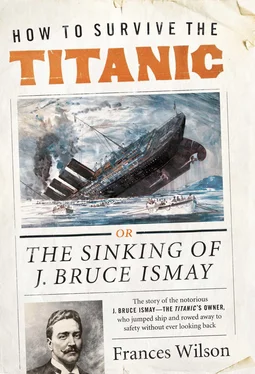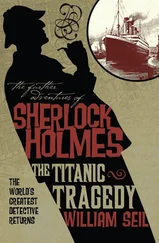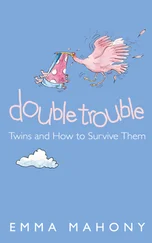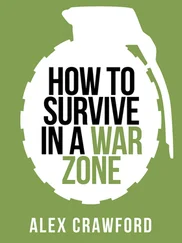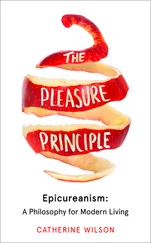Then Marlow would stretch out his legs after dinner on the deck of some barque, light his cigar, fill his glass, and tell Ismay’s tale to an audience of men who also follow the sea. First he would paint on his dark background the details so essential to the myth of the Titanic: there would be a ship the size of a cathedral, her monstrous birth in the Belfast shipyard; the decision to limit her lifeboats so as not to clutter the decks; her doomed beauty; the cheering, the pride, the jubilation as she slides down her cradle to taste her first drop of water; the ice warnings; the Captain driving her on and on, the moonless sky, the sudden appearance of the berg, rising 500 feet out of the water; the misplacement of the binoculars; the boys in the crow’s nest ringing the bell; the order to turn ‘hard-a-starboard’; the opening up of the ship like a tin of sardines; the torrential rush of water; the sleeping passengers; the dutiful crew; the Captain losing control; the band playing ragtime; the Californian, with her engines off only eight miles away; the steerage passengers trapped down below; the half-filled boats dropping into the water; the men in their dinner jackets going down like gentlemen; the man who dressed as a woman to get a place in a lifeboat; the wives who chose to die with their husbands; the other wives in the lifeboats refusing to save their husbands; the strange unnatural calm of the conditions; the refusal of the passengers to take in what was happening until the very end; the small town’s-worth of people who died that night. Marlow would linger over the many different languages spoken in the steerage compartments, the four Chinese sailors of Collapsible C, and he would save for his finest canvas the splendour of the Titanic ’s final dive and the death-music that followed. But at the heart of his story would be Ismay’s jump and his subsequent battle with his moral identity, because for Marlow ‘the ship we serve is the moral symbol of our life’ and nothing can be said with certainty about a man until he has been ‘tested’ by his ship.
Marlow and Conrad parted company two weeks before the Titanic set sail. His departure is as mysterious as his arrival, but Marlow had probably seen enough, analysed too much, sat for too long upon too many decks holding audiences spellbound with too many soliloquies, and Conrad said goodbye to him on the night of 25 March 1912 when he finished Chance: A Tale in Two Parts, whose subject is coincidence. ‘The last words were written at 3.10 a.m.,’ he told the American collector of his manuscripts, John Quinn, ‘just as my working lamp began to burn dimly and the fire in the grate to turn black… I went out and walked in the drive for half an hour. It was raining and the night was still very black.’ 10He was happy with what he had produced but ‘as to what will happen to it when it is launched, I am much less confident’. 11That spring, Chance was serialised in the New York Herald, making Marlow’s appearance in New York converge with the attacks on Ismay in the American press.
The Titanic is a tale of the convergence of art with nature, but nothing converges so much in its telling as fact and fiction. Even for those survivors who watched from their lifeboats as the ship went down, it was an imagined as well as a real experience and many later drew on Dante and Virgil in their descriptions of the night. Conrad, too, preferred to base his yarns on recorded events; the origin of Lord Jim was, after all, the affair of the Jeddah and Jim himself was modelled on the Jeddah ’s Chief Mate, Augustine Podmore Williams. Conrad used Jim as a way of reflecting on the conduct of Williams, and one of the effects of using Jim’s story to reflect on Ismay’s is to see how characters who live in fiction have more appeal than those who do not, although even Marlow admits to becoming ‘thoroughly sick’ of Jim’s ‘vapourings’. Ismay is less sympathetic than Jim, just as an evening spent with Hamlet at a hotel bar would be less engaging than an evening spent watching him perform his indecision on the stage, and Emma Bovary would become a bore were she to telephone us every day. As with a mirror, the distance afforded by art adds depth of vision; art increases our capacity for sympathy. It reveals, as Oscar Wilde puts it in ‘The Decay of Lying’, ‘nature’s lack of design, her curious crudities, her extraordinary monotony, her absolutely unfinished condition’. It is only when we place Ismay’s crude, monotonous, absolutely unfinished narrative next to that of Lord Jim that his form begins to thicken, his blood to flow and his consciousness to take on an essential extra layer. The voluble Jim, who digs deep into his own experience, is the underside of the taciturn Ismay who, having glimpsed the depths, sticks to the surface of his story throughout.
Conrad and Ismay converge as well: born five years apart, Ismay is all size and splendour while Conrad, a solitary exile, is a creature of great experience and terrifying intensity who comes to us by sea from heaven knows where. Even to his friends, Conrad was a stranger drifting through. Like the Titanic itself, the lives of both men broke in half somewhere near the middle; each spent the first part on water and the second part on land, recovering. Their love of ships pushed them to the limit. Each collapsed beneath the weight of his experience, each found solace from the sea on an island, and each jumped — twice.
In the mailroom of the Titanic was a package containing the manuscript of ‘Karain: A Memory’, the precursor to Lord Jim. Written in 1897 and first published in Blackwood’s, ‘Karain’ was later included in Conrad’s collection of five stories, Tales of Unrest. He had been sending it to John Quinn in New York, whose letter describing as a ‘God-send’ the US Senate inquiry into the wreck would subsequently inspire Conrad’s second article for the English Review, ‘Certain Aspects of the Admirable Inquiry into the Loss of the Titanic’.
Karain is a ‘great Bugi dandy’, a spotlessly clean, magnificently theatrical Malayan ‘adventurer of the sea, outcast, and ruler’, whose domain consists of three villages on the narrow plain of an island shaped like a young moon. He befriends the crew of a visiting ship, one of whom, in a prefiguring of Marlow, is the sympathetic narrator of the story. One night Karain swims out to the yawl in a state of terror. ‘Not one of us doubted that we were looking at a fugitive… He was haggard, as though he had not slept for weeks; he had become lean, as though he had not eaten for days… his face showed another kind of fatigue, the tormented weariness, the anger and the fear of a struggle against a thought, an idea — against something that cannot be grappled, that never rests — a shadow, a nothing, unconquerable and immortal, that preys upon life.’ In the safety of one of the cabins, Karain reveals that he is an exile on this island; a victim of unrest.
Many years ago, in his own land, the lovely sister of Karain’s great friend, Matara, had run away with a red-faced, red-headed Dutch tradesman, bringing dishonour on her family. Karain swears to help Matara avenge himself on the couple, and the two men set out on their journey. After years of scouring the islands in search of the girl, she starts to appear to Karain in waking dreams. ‘No one saw her, no one heard her, she was mine only!… And she was sad!’ Her continued presence ‘gave me courage to bear weariness and hardships. Those were times of pain, and she soothed me… She was all mine and no one could see her.’ Karain, who talks to the vision in the dark, murmurs to her one night, ‘you shall not die’. When he and Matara at last find the house where the girl and the Dutchman are living, Matara hands the gun to Karain and whispers ‘Let her die by my hand. You take aim at that fat swine there. Let him see me strike my shame off the face of the earth — and then… You are my friend — kill with a sure shot.’ Karain takes the gun and then sees the tender eyes of the ‘consoler of sleepless nights, of weary days; the companion of troubled years… Had I not promised that she should not die?… her voice murmured, whispered above and around me, “Who shall be thy companion, who shall console thee if I die?”’ Karain hears himself shout to her to run and the girl leaps; Matara too leaps and runs towards his sister; Karain fires the gun and kills Matara instantly. ‘The sunshine fell on my back colder than the running water’, and he walks away into a forest ‘which was very sombre and very sad’. Since that day Karain has been ‘hunted by his thought along the very limit of human endurance’. The girl stopped appearing to him — ‘Never! Never once! She had forgotten’ — and instead he is pursued by the spirit of Matara, who ‘runs side by side without footsteps, whispering, whispering old words — whispering into my ear in his old voice’.
Читать дальше
